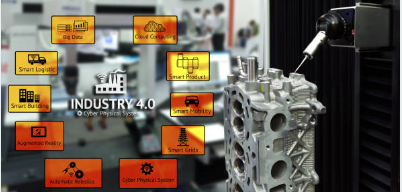Better utilization of your fleet, less wasted person-hours, and, most importantly, the prevention of accidents are all made possible with real-time tracking of forklifts or other vehicles, such as AVGs, clamps, and fork trucks, allowing your logistics and production managers to achieve greater efficiency, profitability, and safety.
How Does Forklift Tracking Work in Real-Time?
Tags transmitting signals to anchors mounted on the ceilings are installed on every forklift, AVG, and other manipulating vehicle that needs to be tracked. After transmitting the signal to the RTLS server, the anchors can pinpoint the location of a moving vehicle within 30 centimeters. The tag has two power options: the car’s electrical system or the internal battery. To better understand the UWB RTLS forklift solution, please read up on it.
The Value of Forklift Data Analysis of Past Performance and Current Activity
Logistics managers benefit from forklift tracking in two ways: first, they learn the precise location of each forklift in real-time, and second, they learn the precise location of their forklifts in the past. To make the information more digestible, it is standardized into measures like forklift travel distance, run time against stop time, the ratio of loaded to unloaded time, task completion time, and Overall Equipment Effectiveness (OEE). This information allows managers to optimize their forklift fleet’s performance and cut costs without sacrificing productivity.
Data Analysis of Forklift Movement
In addition to mapping exactly where each forklift travels, cutting-edge visualization can shed light on operations and help identify and eliminate inefficiencies. They include Spaghetti diagrams, which depict the continuous flow of traffic throughout the halls, and Heatmaps, which show how the density of the traffic is dispersed around the facility.
Visualization techniques like this are useful for enhancing project efficiency and reducing costs because they are easily understood by all parties involved.
Warehouse Inventory and Forklift Optimization
Using the most efficient route can save money on gas, save wasted time for drivers, and reduce the number of necessary lift trucks. The drivers’ best and most efficient routes may be determined with complete and accurate information. Finding idle trucks, mapping out warehouse space more efficiently by knowing where everything is, and keeping tabs on who’s doing what in real-time are all ways to increase efficiency and cut costs.
Warehouse Inventory and Forklift Optimization
Each forklift has a monitor installed so drivers can see what they must do at any time. This gives drivers instant information about where to pick up the next load and where to unload it. Furthermore, the navigation system directs the driver along the quickest and shortest path possible, considering the presence of traffic and other obstacles.
If the operator is in the wrong place when it is time to unload the cargo, they will receive an urgent warning when you need to know precisely where each pallet is, only the UWB-powered.
Utilizing the Forklift Crash-Prevention System to Improve Safety
Every year, forklift accidents claim the lives of 85 people and injure an additional 34,900 in the United States. The Occupational Health and Safety Administration (OSHA) also reports that roughly 70% of all forklift accidents are avoidable.
Forklifts can be programmed to automatically slow down when they approach a crossroad or when they are close to an employee or another forklift by using employee location tracking to know where people are moving throughout the facility in real-time and with 30 cm accuracy. This is a tried-and-true method of preventing accidents involving forklifts from happening, both between machines and workers.
Forklifts Travel at Reduced Speeds Due to Anti-Collision Mechanism
Increased security and convenience thanks to a high-tech forklift
You may construct unlimited virtual zones that can be readily modified at any time due to unparalleled scalability to offer proven indoor tracking projects of any size. The intralogistics managers are then free to create whatever virtual zones they see fit, within which the driver will receive a warning if they attempt to enter a restricted region. If a visitor, like a truck driver, unexpectedly enters the forklift operator’s safe working area, the operator can be notified on his screen. You can create alerts based on where the forklift is and how fast it’s being driven. This innovative idea for forklifts improves driver safety, access rule compliance and reduces damage.
Pallet Rack and Shelving Safety: Preventing Accidental Injuries
One of the top five most frequent warehouse mishaps is the collapse of pallet racks, stored items, or entire shelves. This happens when something has been hit by a forklift before and didn’t collapse right away but was left unstable and vulnerable to collapse. As a result of knowing each contact’s precise time and place, damages are no longer unaccounted for.
In conclusion, Logistics and production managers may increase productivity, profits, and safety by keeping tabs on forklifts and other vehicles in real-time with RTLS technology. Managers can maximize the efficiency of their forklift fleet, reduce expenses without compromising output, and learn from the past performance by reviewing historical data and ongoing operations. Modern data visualization methods can also illuminate processes and reveal inefficiencies that can be addressed and mitigated. Creating virtual zones and alerts can increase security and convenience in the workplace, and using the forklift crash-prevention system can considerably improve safety in the workplace. Accurate and timely information on each interaction is the key to reducing accidental pallet rack and shelf system injuries. Logistics and manufacturing managers can boost productivity, cut costs, and beef up security by implementing RTLS systems.

